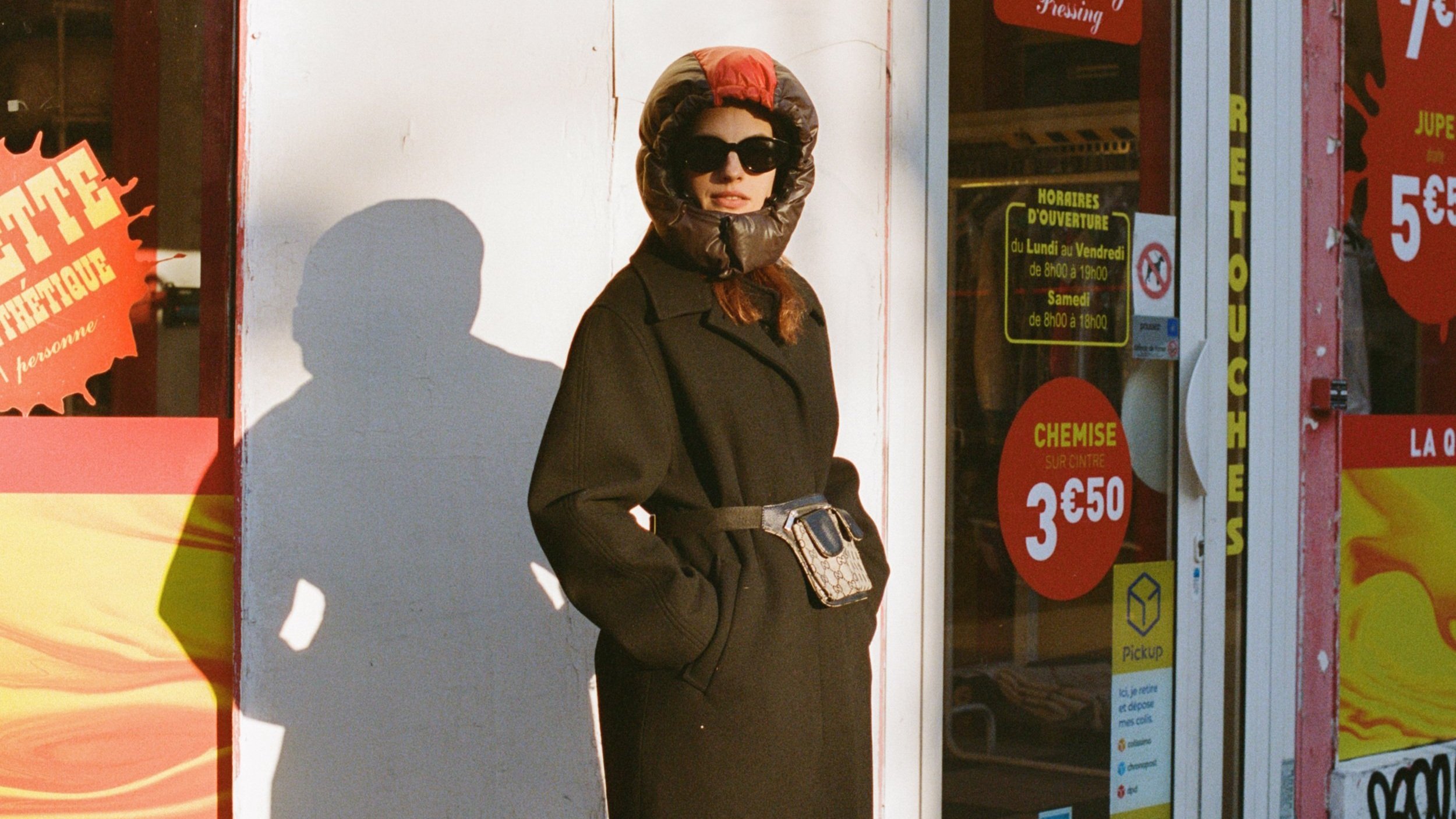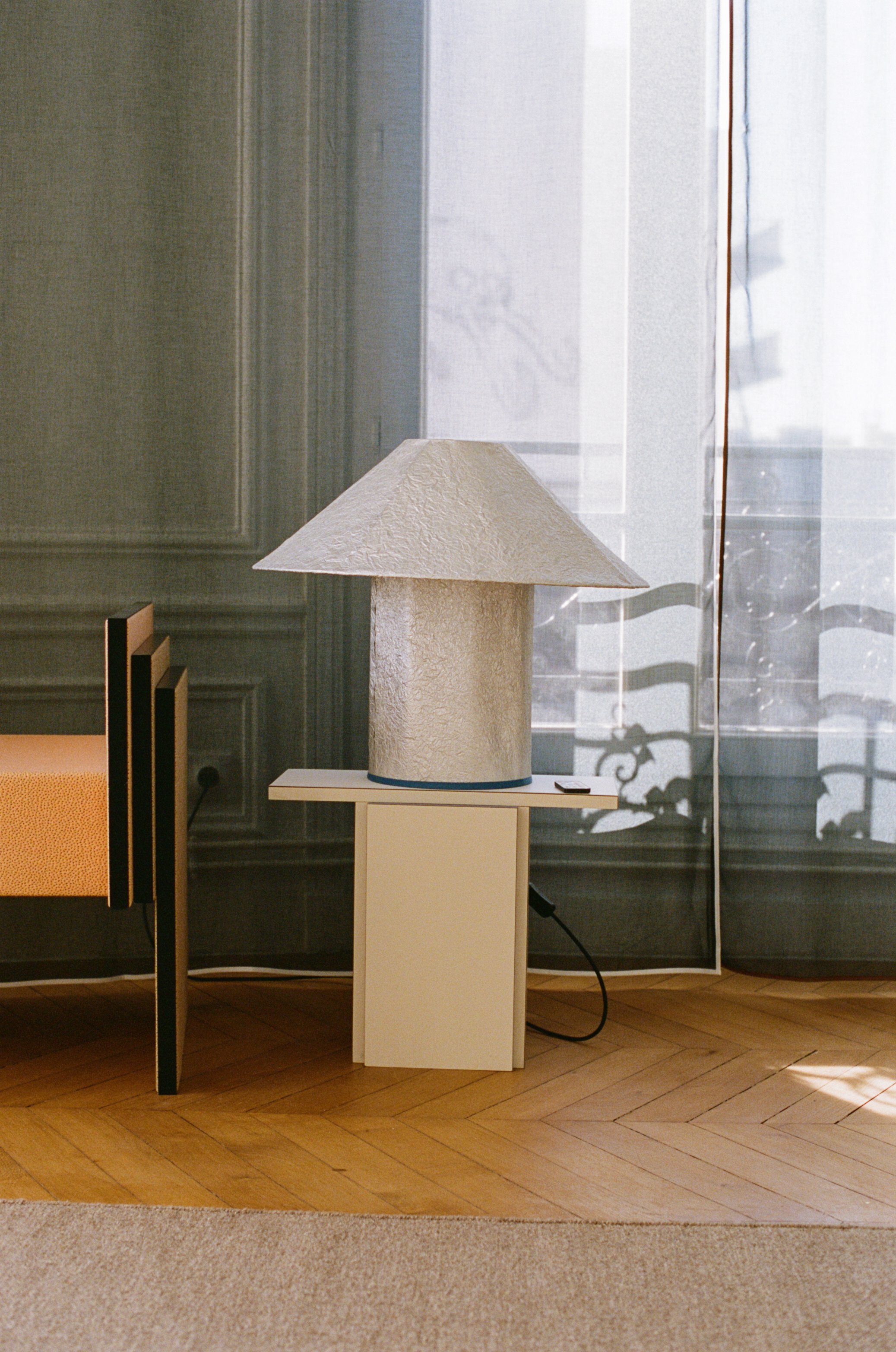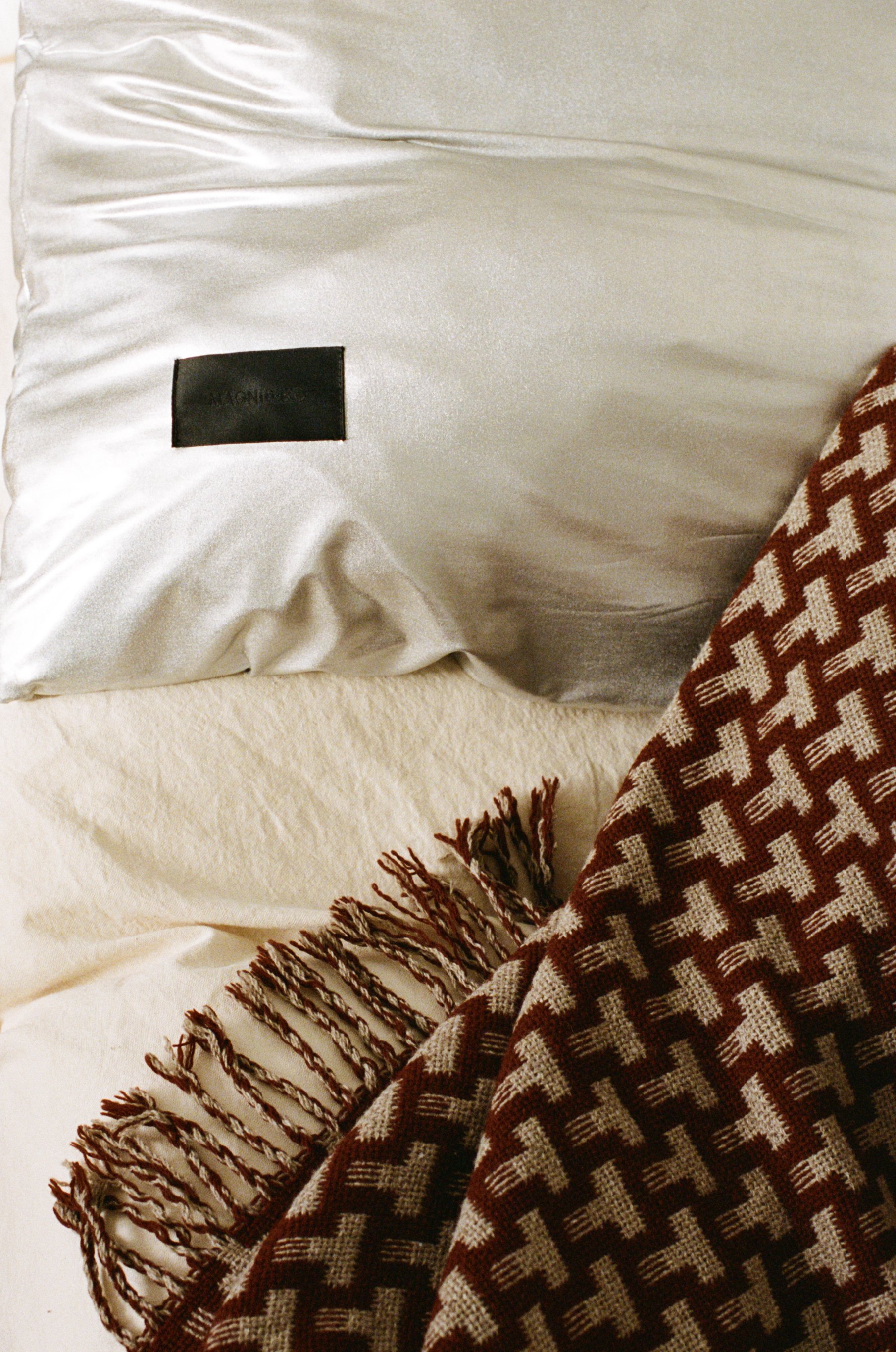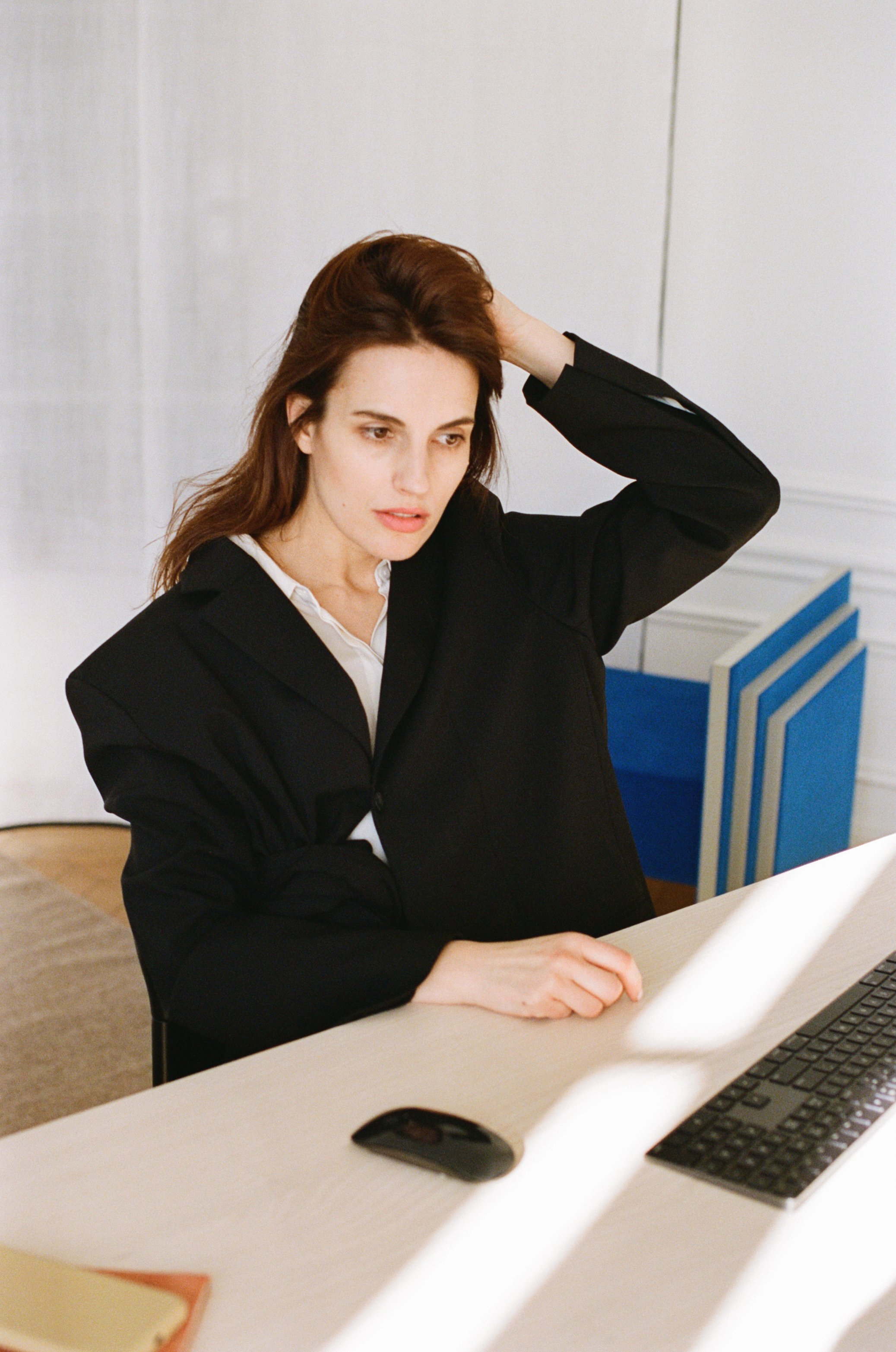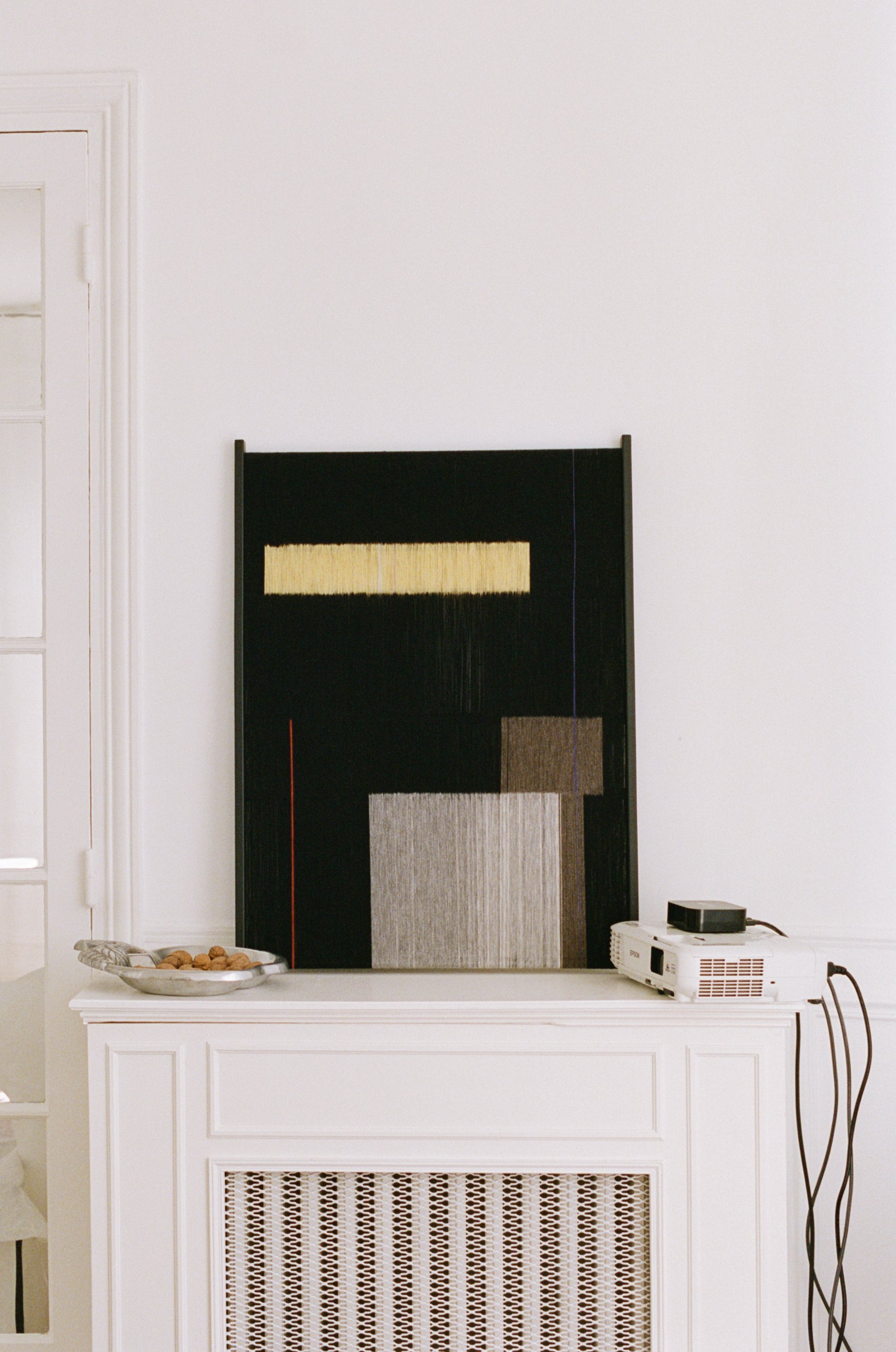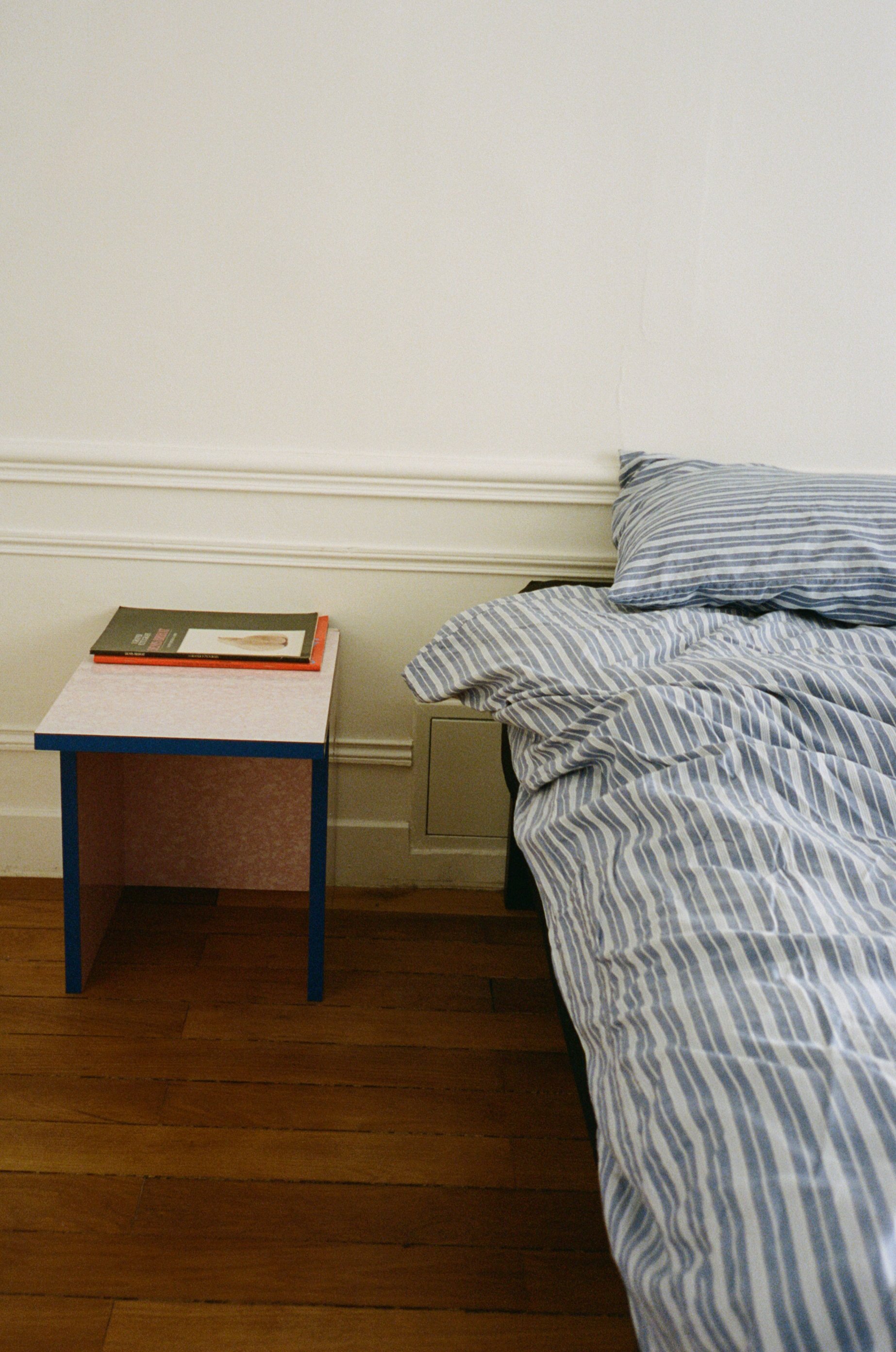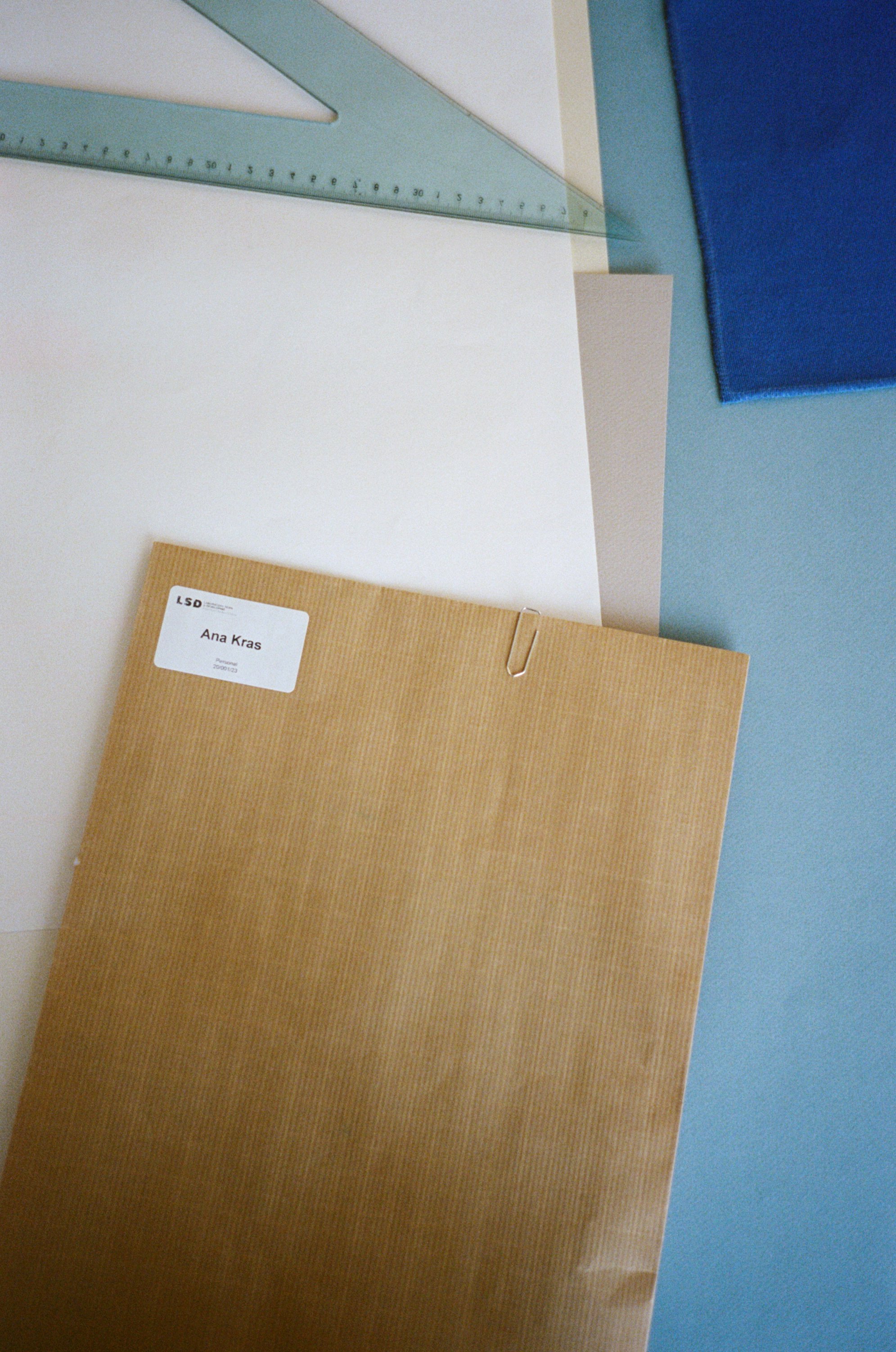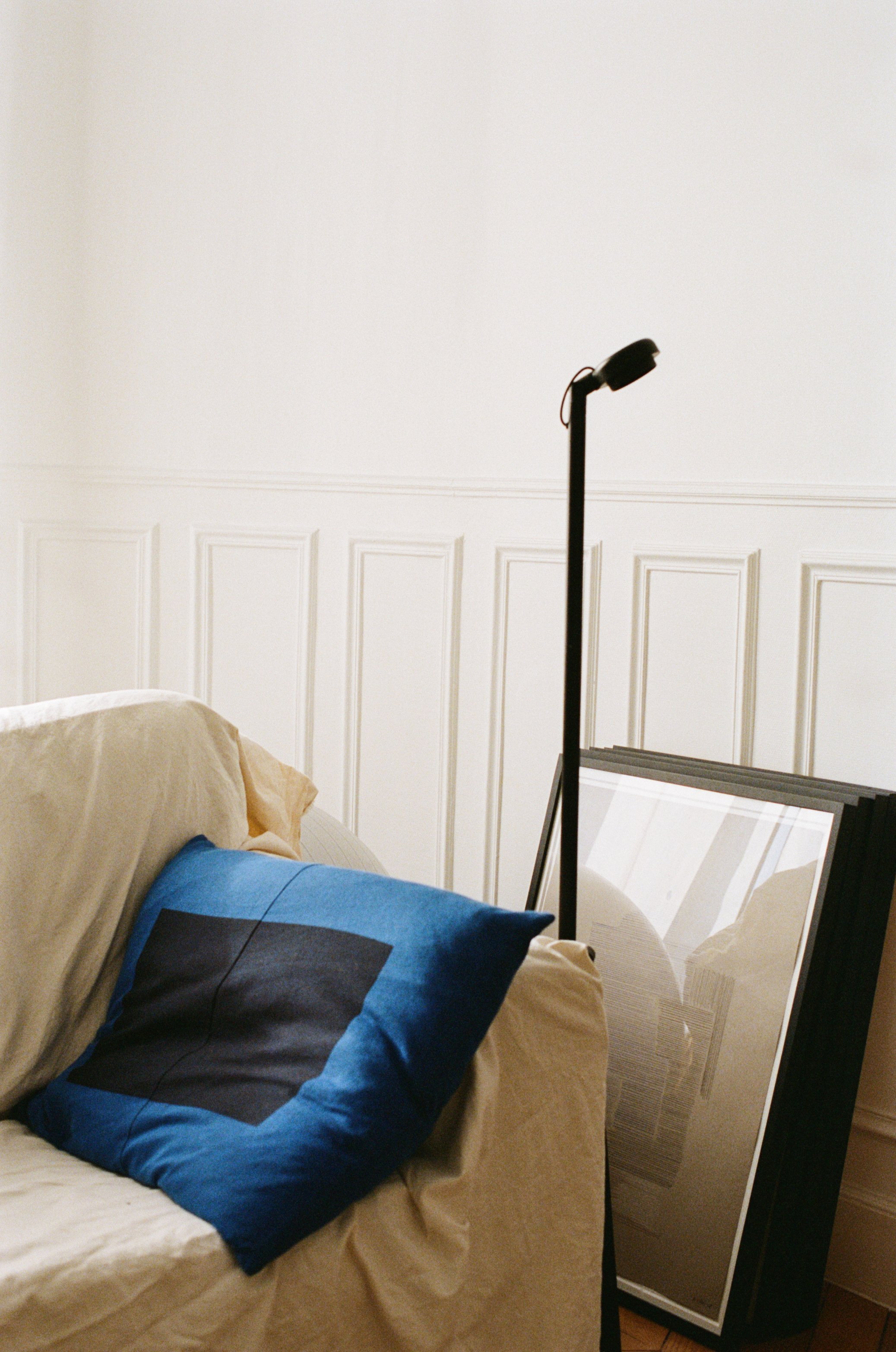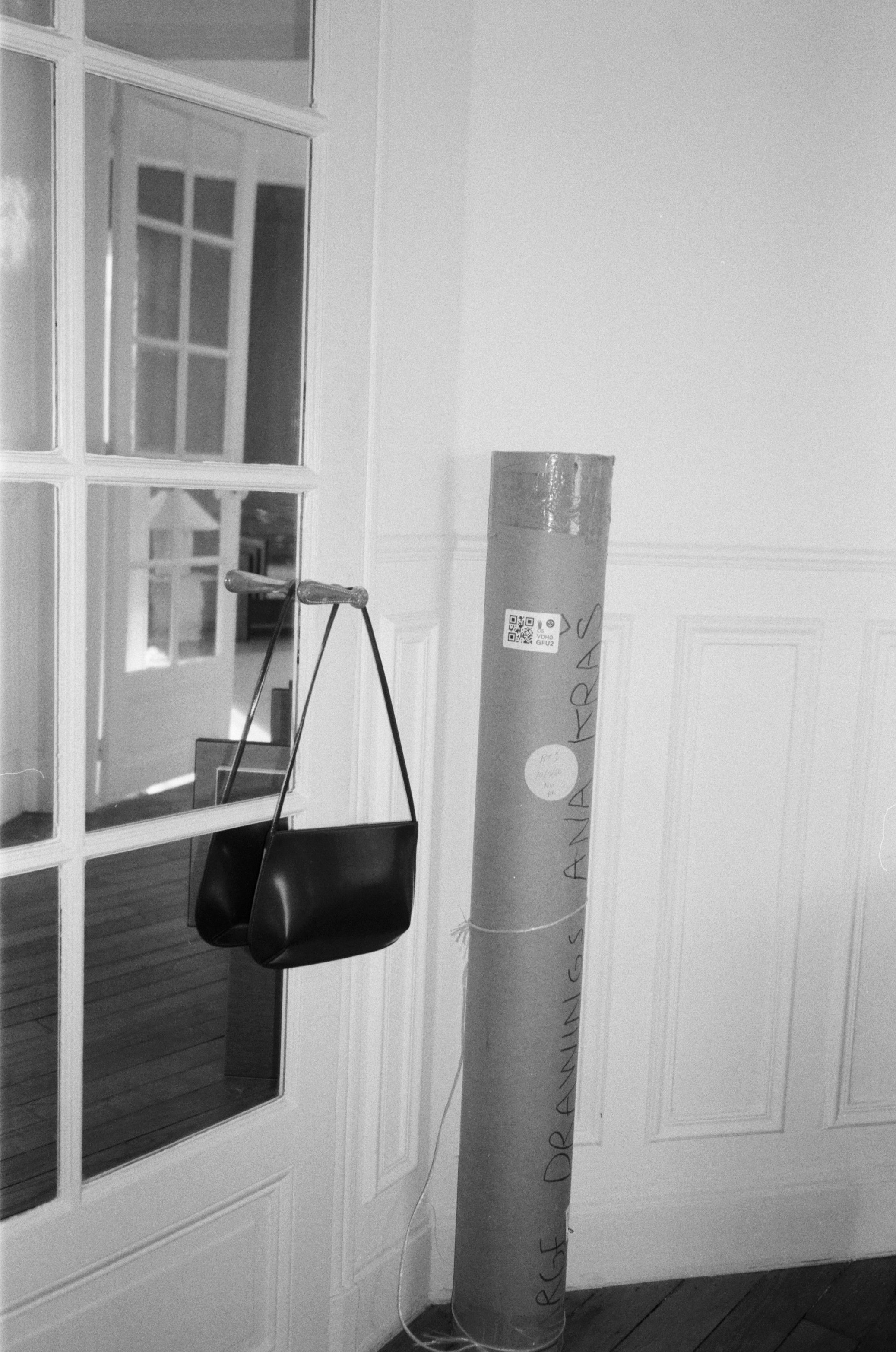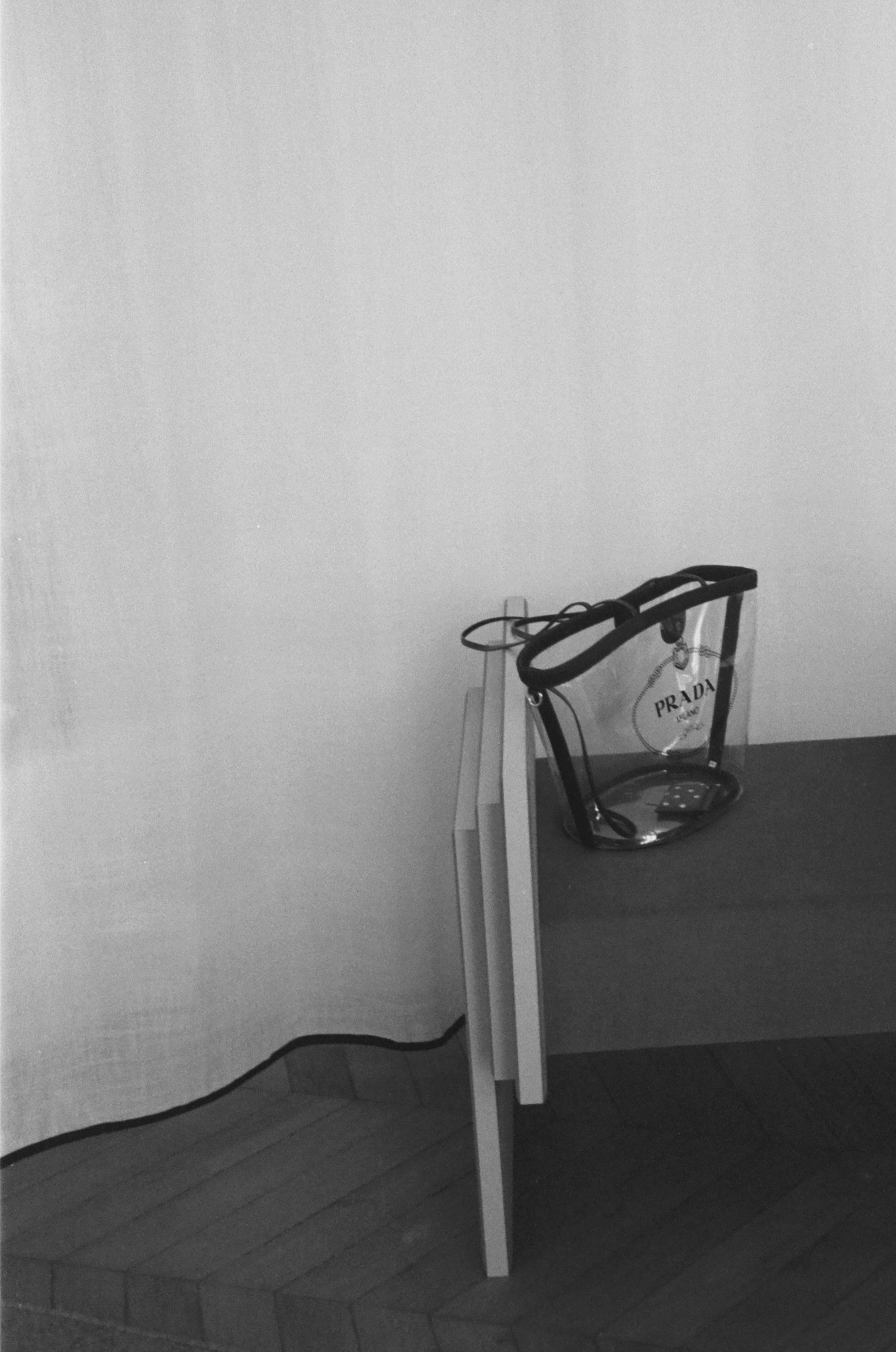Your best chance of spotting artist and designer Ana Kraš is at the Parisian bakery Chambelland, in line to buy her daily pain de sucre with vanilla and raisins. Other than that, seeing Ana in public is rare — she spends 90% of her time in her apartment-studio hybrid, working on prototypes for her understated but imposing furniture or covering her apartment in swatches of fancy paper, which are her most frequent indulgence. In this conversation, Ana shares thoughts on her childhood in Belgrade marked by war, her luxuriously simple approach to beauty and fashion, and how she, as a self-professed “homebody,” creates an inspiring space in which to spend her days.
♫ Listen to ana’s playlist | ⌨ ana’s last google search
on her morning routine
First thing after I wake up, I brush my teeth and wash my face or take a quick shower. Then, I brush my hair — my man says that I look like a dog ready to go to a dog show. I pour boiling water over two spoons of chicory root powder and add a little bit of Oatly. It makes my body feel so good, it's the best for digestion. I love a sweet breakfast. I have a few combinations that I rotate through — toasted bread with Serbian plum jam, tahini toast topped with honey, a black sesame croissant with homemade Portuguese orange jam, or my favorite thing to buy from my local bakery, Chambelland: pain au raisin.
on her childhood under war
I was born in Belgrade and lived there until I was about 26. There were very nice times until I was seven, then war started. Soon the borders were closed and embargos ushered in some of the worst inflation in the history of the world, followed by bombing. It went on for so many years. Looking back, I see that it wasn't the most average childhood, but growing up in difficult circumstances is a kind of blessing. I don't think having abundance is a good environment for development.
I was lucky to have been born into a family rich in love and understanding. My parents gave me the freedom to establish my own limits, while showing me through example how I should treat others. When I was 15, I convinced my parents to allow me to go to Tokyo over the summer to work as a model. It was way before mobile phones were prolific, so it's crazy that they let me go. I had to take a minivan to Budapest to fly out of Hungary, as the airports in my country were shut down because of the war. In my head, this trip marks the end of my childhood. I made money for my family, which was very needed, as my sister had a baby just after the bombing, and we had so little at that time. I loved the feeling of being a grown-up, a provider.
““After Belgrade, Los Angeles was an unexplainable shock. It’s hard to imagine two places on the planet that are more opposite. The architecture, the color palette, the values, the wealth, the culture, the problems, the food... I tried avocado for the first time and saw a kind of life I’d never known existed.””
on her multi-hyphenate creative career and favorite medium
I applied for the furniture design and interior architecture program at the University of Applied Arts in Belgrade, truly only because I read about it in a brochure and it sounded cool. I passed the application exam, so I found myself studying that. I only fell in love with furniture design in my final year at university, when I made my first real object — a prototype of a chair. During my studies, I held many random jobs — mostly graphic design work, creating flyers for clubs, catalogs, logos. I also acted in many TV commercials. I loved to work so I could be financially independent. After I graduated, there was a lot of demand for my Bonbon lamps and some other furniture pieces I had designed and shown at Milan’s furniture fair. I was also taking many photos, and a German magazine bought one from my Flickr to use on its cover. I made the equivalent of two average Serbian monthly salaries from selling that one photo. It was mind blowing. I’ve always pursued all of these different mediums simultaneously, so when I'm asked what I do, I don't really qualify my practice. I usually say I work in design, art, photography and fashion.
That being said, paper is my number one favorite medium. I think that’s related to me growing up playing with paper scraps left over from our family’s photocopy shop. I draw and sketch and write, I make objects out of paper, I cover my walls with it, I always buy beautiful Japanese, Indian, Nepalese paper… I even collect paper from packaging. I think I spend more money on paper than clothes. When I wanna treat myself, I go to a paper store.
on her artistic process
My artistic process depends on the discipline I’m working in at that moment, but in all of them, it's a very first-impulse, intuitive energy that starts my process. My design process is the most complex and longest as it has many phases — a thought, then a sketch or a drawing, solving technical issues, making technical drawings, building a prototype, then sourcing production. There's a lot of waiting, and there are many people involved in the process. Sometimes it can take years, especially when I design for a brand. I love everything about designing except when I have to wait. Photography has a way shorter and simpler process: seeing something, getting excited, and pressing a button.
““To focus on work and the joy of making things, not on the result and recognition. This is much harder nowadays… People want an instant reward. It was easier when I started, without Instagram and all. I truly did my work only for myself and I feel so lucky to have had that opportunity.””
on loving and leaving NYC
It was a life experience I never knew I would have, it expanded my universe, but deep down, I never fully felt at home there. I am not sure why. As I got older, I felt less and less at home and more and more that I wanted to go back to Europe. I noticed that each time I flew to Europe for work, I would feel a sense of a relief the second the plane touched down. In the year before COVID, I was in Paris many times for work, and each time, I felt really good being here. I felt like the city had changed for the better. I remember leaving Paris just before the pandemic was announced and looking up apartments for rent in Paris on SeLoger to get an idea of what the market looked like.
I flew to the States, packed up 10 years of my life and work, put in storage, and came back to Paris. I travelled around that whole year, without a home, as my Serbian passport didn't allow me to stay in the EU, but a year and a half ago, I finally settled down here in France. I chose Paris because I needed a place that was diverse and where I could work, where all my international friends travel to frequently, and that has a direct flight to Belgrade every day. I don't speak French at all, yet, but I plan to learn. For now, it's nice to feel a bit isolated and alone when people talk and I can’t understand.
What are you reading?
To be honest, I haven't read in a while. I’ve been working a lot, and for me, reading in English is not very relaxing... I also don't follow any news sources. I try to update myself with the news once a week, unless there's something big going on.
When I do read, I typically turn to art books like Ando: Complete Works, The House Book, and Henry Taylor.
““Being in the USA was financially demanding. In order to eat and pay rent, I had to do so much work that I didn’t like or care about, and I made so many compromises. I truly hate so many things I did over those years, but I had no choice. At some point, I was able to say no to almost everything I did’t truly like and make a living off work that I (mostly) enjoyed doing. That took years.”
”
on creating a homebody’s home
I feel most at home in Belgrade, and also get that feeling when I touch down in LA or NYC. I haven’t lived long enough in Paris for it to feel like home quite yet. I’ve never owned a home, just rented. I start right there, with that fact, and that means no major investments on a temporary space. I am very picky with spaces, even with my first shoebox-sized solo apartment in NYC — I searched so much until I found a space that had certain proportions and height and light that excited me. I need to fall in love with it a little.
I remember walking on Canal street right after I’d moved to NYC from LA and looking up through the windows into people’s homes. I saw a loft (that was the first time I’d seen a loft in my life), and it was so long and big, with giant windows showing a space full of art and objects. I was mesmerized and wished so hard that one day I could live in a space like that. Years later, I moved into a loft and fulfilled that dream. It made me so happy and provided the space for me to make so much more work. It was also very expensive, so it made me work harder, which was actually a great motivator. I built an oversized table with a base that could store all my large scale papers and drawings. The space had a long brick wall, and I really dislike brick in interiors, so I covered it all with crinkled white sheets of paper. I painted the floor in a milky, coffee-colored shade of brown. I still miss that space sometimes.
When I moved to Paris, I decided to rent a typical Parisian apartment, because it's so opposite to my style or anything I’d ever lived in before. It was a very interesting challenge to furnish, as nothing can touch the walls, really… It feels disrespectful to the wall moldings to cover them up. My home is still my studio, so all my prototypes are here with me. I don't really have the chance to decorate my space, just to arrange my protos in the best ways possible. When creating a home, I always start with the light. I make sure the ceiling light is not harsh and uncomfortable and I put many lamps throughout the space. I love to spend at least six or seven hours a day alone at home, not interacting with anyone. I think, looking from the outside, people might assume that I am much more social.
on her beauty routine and personal style
Taking baths almost daily is definitely my most constant routine. In them, I use Olbas oil or epsom salts and eucalyptus and sea salt soap from The Soap and the Sea. I like Rowse rosewater to spray on my face, but if I don’t have any, I’ll use Bioderma toner or micellar water. In winter, I sometimes use Rowse’s rosehip oil, Everyday oil, jojoba oil — any oil I have (I've used coconut or even olive oil in the past) while my face is still wet, so it soaks in. I top that with Vichy Aqualia Thermal Rich cream. I've been using it for over 15 years. I hate sunscreen, but I try to use La Roche Posay SPF 50.
My makeup routine is very basic, I don't use any foundation or colored creams, just Laura Mercier Secret Camouflage concealer under my eyes. I always have dark circles, no matter how much I sleep. Sometimes I like it like that, sometimes I like to look a bit more awake. I like Merit’s cream blush, or I use a bit of rose-tinted Hermes lip balm on my cheeks. For my lips, I love Sun Bum’s tinted balm in Bonfire. I wash my hair with Less is More shampoo and condition with the Vichy Dercos Protein hair mask. I color my hair myself, three or four times a year, with random supermarket dye from Garnier or L’Oréal.
My basic uniform is pants and a long blazer, orthopedic granny shoes, and a long coat. In winter, I pretty much wear the same outfit every day — my puffy hood (detached from an old Ganni jacket) with a black cashmere sweater and brown pants. Most of my clothes, like the brown pants, come from Belgrade, where a family friend who is an amazing seamstress makes clothes to my measurements based on my drawings. In the summer, I like to wear sheer, Barbie doll-looking clothes, too. I don't shop designers, only the occasional vintage piece, but even that is super rare for me. Since I work in fashion, many of my clients gift me clothes!
ana’s favorite spots in nyc and paris
In New York City, I love Hawa (for açaí bowls), Cafe Himalaya, Dimes and Il Laboratorio del Gelato. My favorite parks are Seward and Washington Square. In Paris, my favorite spots are Unrêve (for the black sesame croissant), Cafe Lux and La Candela (for ceviche).
interview and images by clémence polès, edited by em seely-katz

